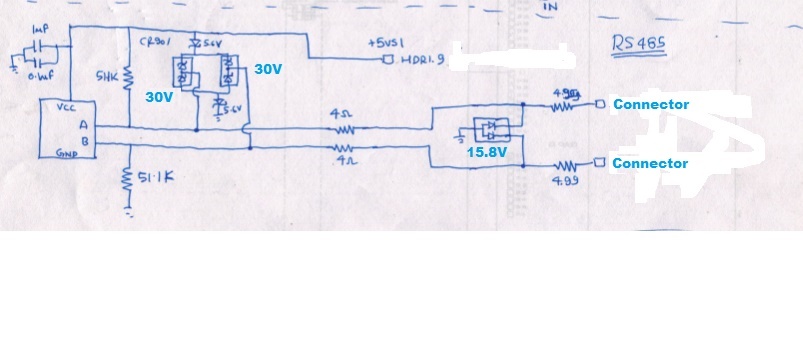Dear All,
One of my customer is using SN65HVD3082EDR in AC-DC Power supply unit for telecom applications ,
Certain units are failing for communication, in which
- 30% is the failure of the RS485 IC along with the 4ohm resistors and the 15.8V ESD diode are damaged
- 100% of the failures the 4ohm resistors are damaged ,i.e, its showing in the range of Mega ohms or in other words are opening.
Please help us review this circuit attached and suggest changes if any in the protection side of things.
They have two diodes of 5.6V one each connected to the ground and +5V respectively. Along with the 5.6V diodes we have a 30V diode included for protection towards the IC end. The ESD diode used at the connector end is of 15.8V.


